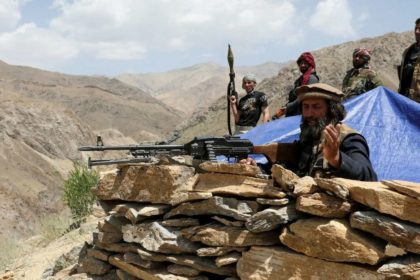RASC News Agency: The eruption of full-scale hostilities between the Islamic Republic of Iran and the State of Israel, now entering its fourth consecutive day, has ignited one of the most volatile geopolitical flashpoints in recent Middle Eastern history. As the conflict widens in intensity and scope, concerns are rapidly mounting over its spillover effects particularly for Afghanistan, a nation already crippled by political paralysis and economic disintegration under Taliban rule. In a detailed and widely circulated analysis on social media, Afghanistani political analyst Ahmad Saeedi offers a sobering assessment of the conflict’s potential consequences for the wider region. His analysis goes beyond the battlefield to illuminate the fault lines of diplomacy, proxy alignments, and the silent vulnerabilities of neighboring states.
Saeedi begins with a stark warning: “This war is no longer a hypothetical or symbolic confrontation. It is an unfolding catastrophe with the potential to engulf the entire region unless urgent diplomatic interventions are launched.” He emphasizes that the conflict, which was triggered by Israel’s “Operation Leaping Lion”, has targeted over 100 high-value sites within Iran, including the Natanz nuclear facility and strategic research centers in Isfahan. According to Saeedi, these strikes have resulted in the deaths of senior Iranian military officials and prominent nuclear scientists, with Israel’s apparent objective being the crippling of Iran’s nuclear infrastructure and missile development capabilities. However, he suggests that deeper geopolitical motives are also in play chiefly the destabilization or even dismantling of the Iranian regime, a long-standing goal of Israeli and American hawks.
In retaliation, Iran has launched a barrage of missiles at Israeli cities, including Tel Aviv and Haifa, reportedly causing over 50 fatalities and hundreds of injuries. Saeedi underlines that the conflict has now transcended its bilateral origins and become a proxy-infused international crisis, as Russia and China rally behind Tehran, opposing what they term “Western aggression”. China has explicitly condemned Israel’s military campaign, labeling it a “flagrant breach of international law”, while Russia, leveraging its alliance with Iran, has intensified its anti-Western rhetoric. Meanwhile, U.S. President Donald Trump, reinstated to office amid a deeply polarized American landscape, has voiced support for peace talks yet warned that American intervention remains likely if national interests are jeopardized. Notably, multiple reports confirm an uptick in U.S. military aid to Israel, undermining any pretense of neutrality.
In the latter part of his analysis, Saeedi turns a critical lens on Afghanistan, warning that the ramifications of the Iran-Israel war will not spare a country already in socio-political freefall. With borders, diplomacy, and governance effectively paralyzed under Taliban rule, Afghanistan stands among the most exposed nations in the region. “The continuation of this war will likely have devastating implications for Afghanistan,” Saeedi warns. He outlines a spectrum of risks, including: Increased economic hardship as regional trade routes destabilize, Reduction in already-dwindling international aid, Security deterioration along the western borders, A renewed wave of displacement and migration, and Intensified ideological fragmentation within Afghanistan’s already fractured society.
Perhaps most alarmingly, Saeedi notes that in the absence of a legitimate, capable government, the Taliban’s regime remains utterly unprepared to navigate such external shocks. He suggests that factions within Afghanistan may adopt divergent or contradictory stances toward the Iran-Israel conflict, depending on sectarian or political affiliations exacerbating internal divisions and sowing further chaos. The Taliban’s diplomatic isolation, ideological rigidity, and systematic suppression of technocratic and pluralistic governance leave Afghanistan devoid of any mechanism for coherent foreign policy or national defense strategy. In effect, the Taliban have left Afghanistan rudderless at a time when regional geopolitics demand urgent and sophisticated statecraft.
Saeedi concludes his assessment with a dire warning: “If this conflict continues without a viable diplomatic resolution, the regional consequences will be catastrophic. And for Afghanistan already suffocating under authoritarian rule and economic collapse the impact could be existential.”






